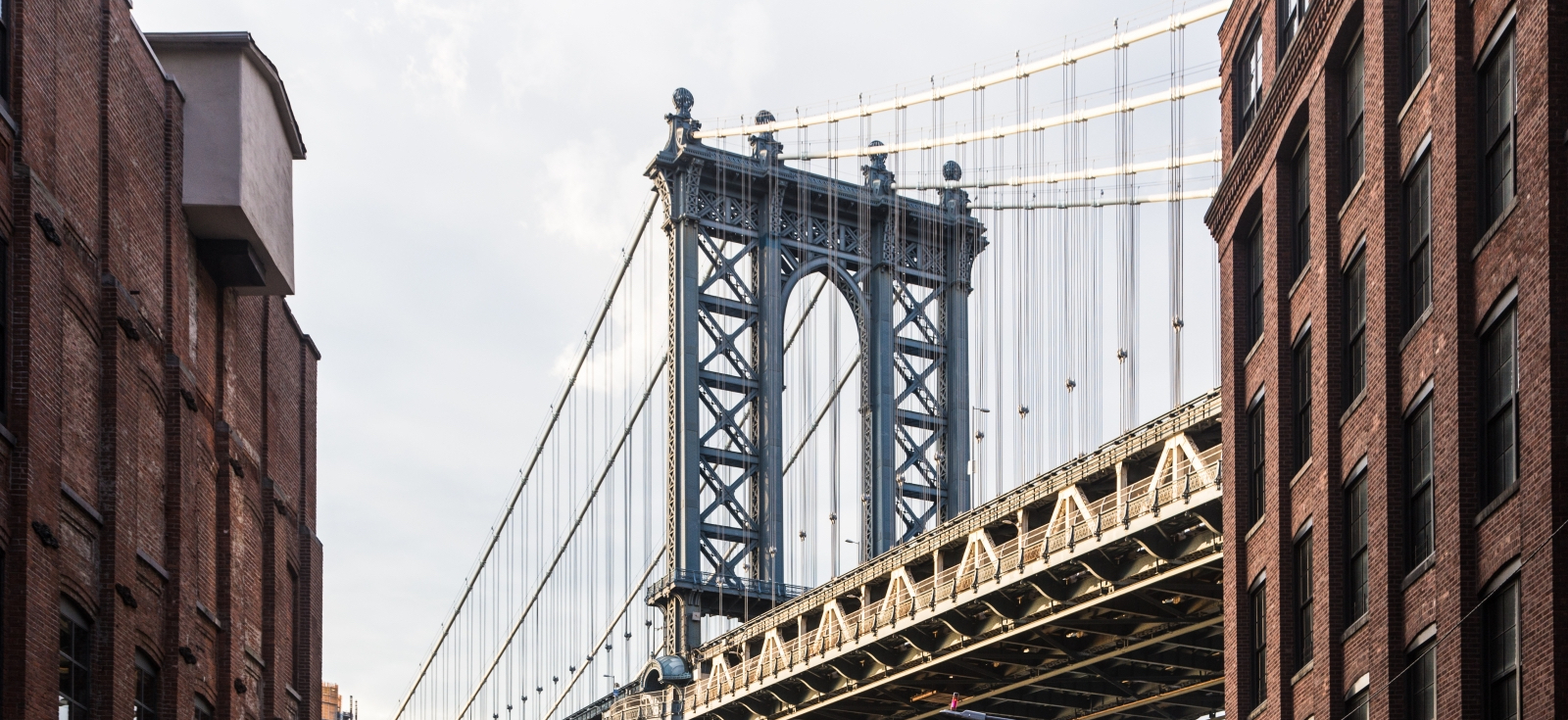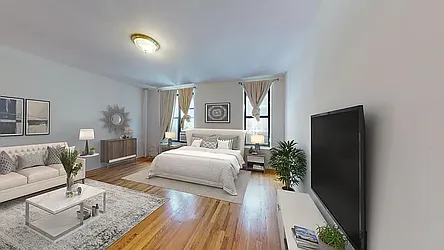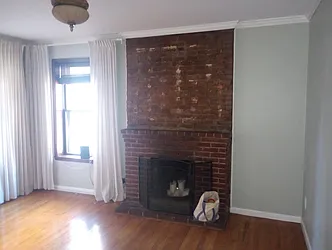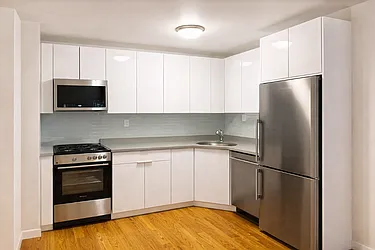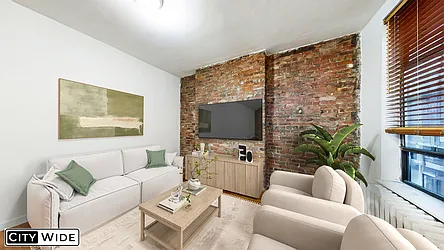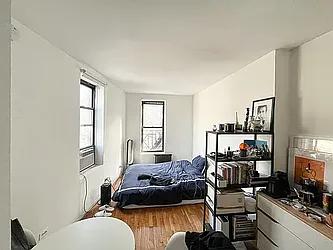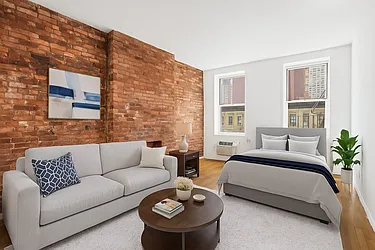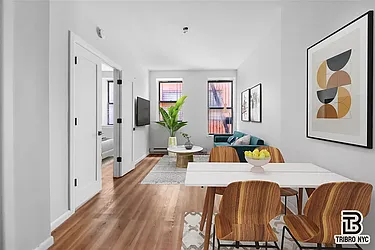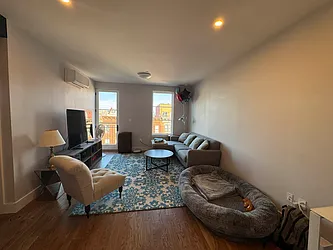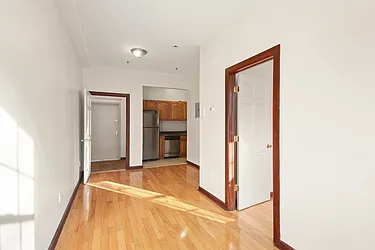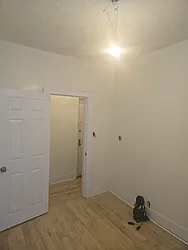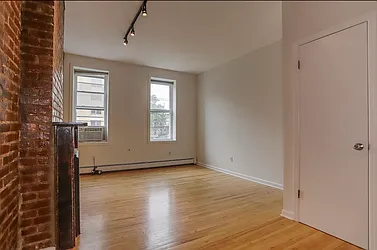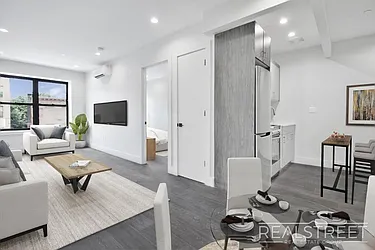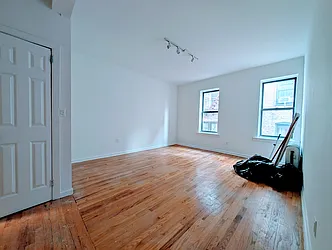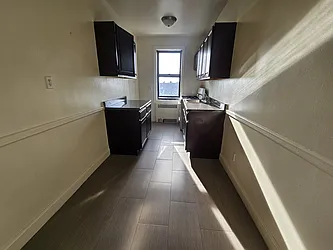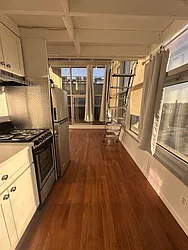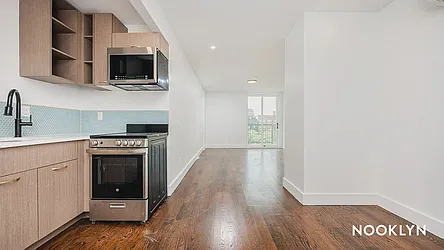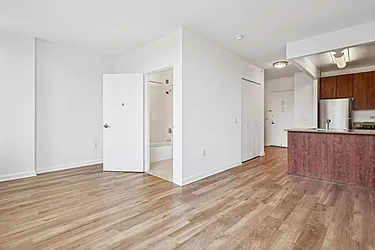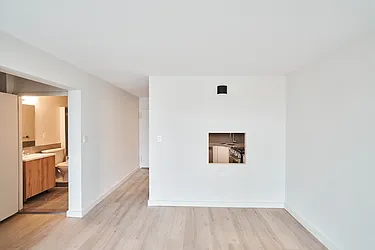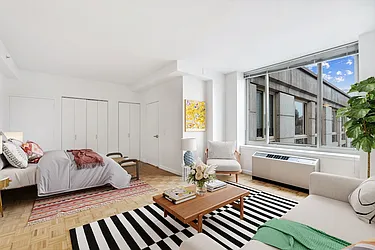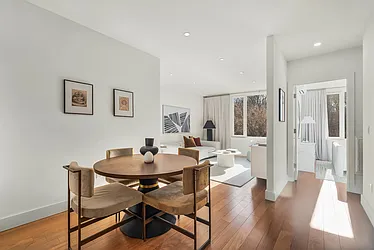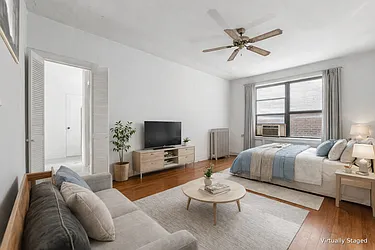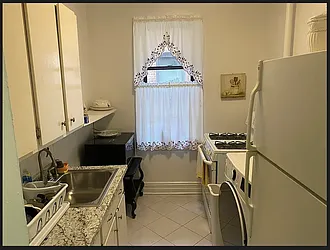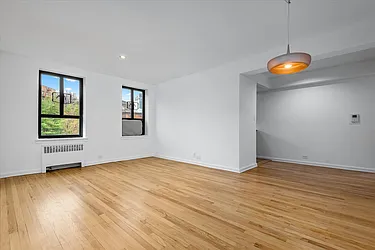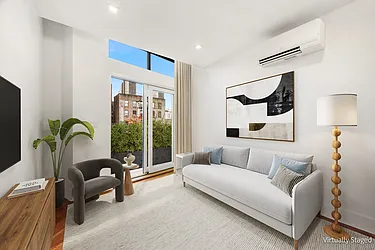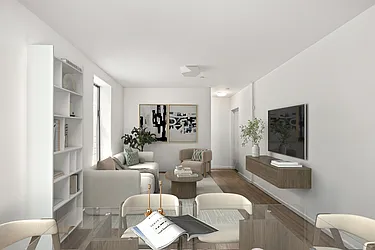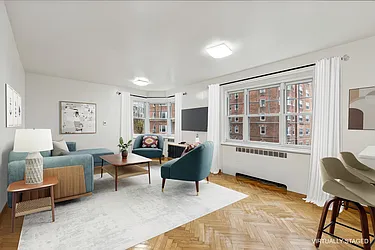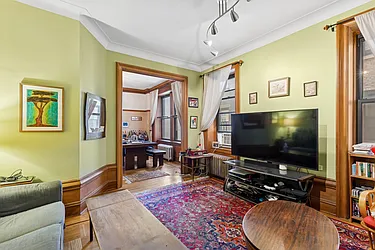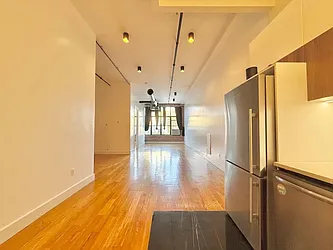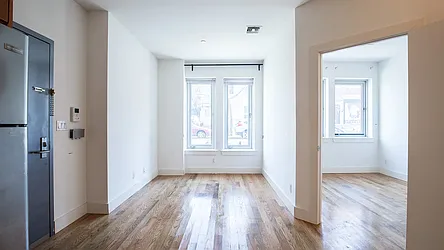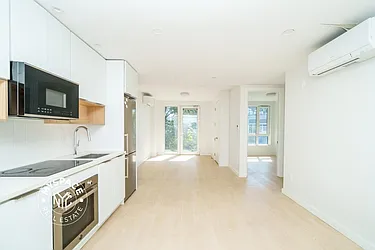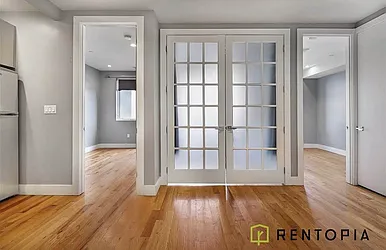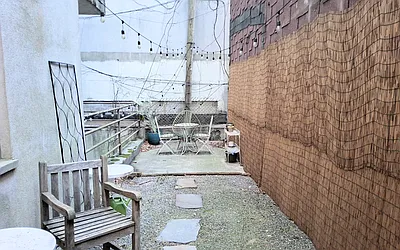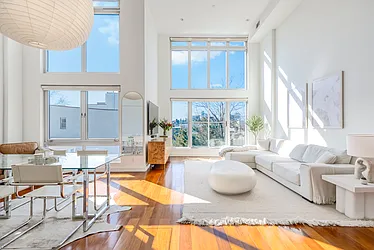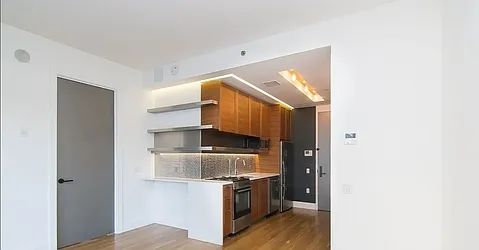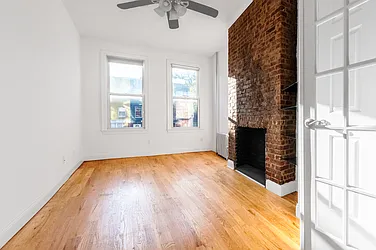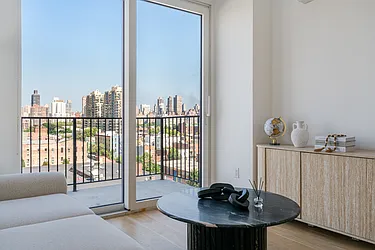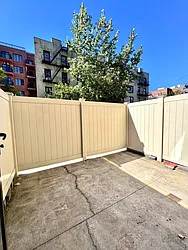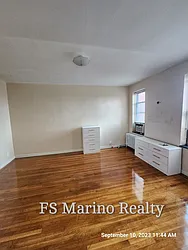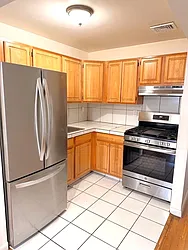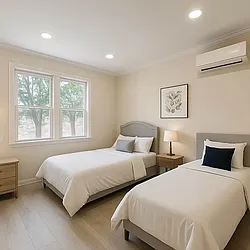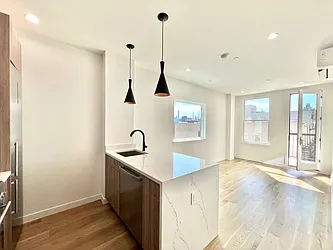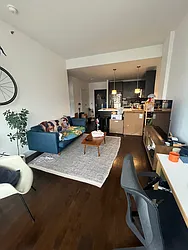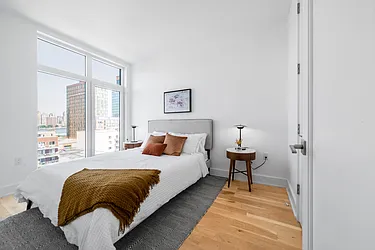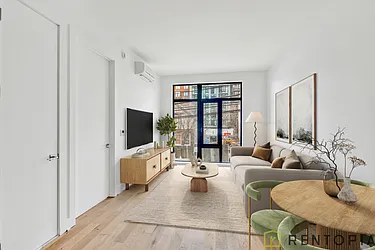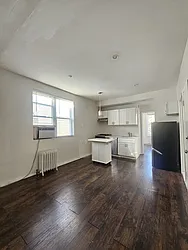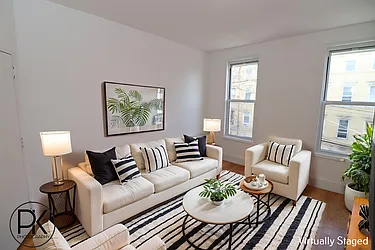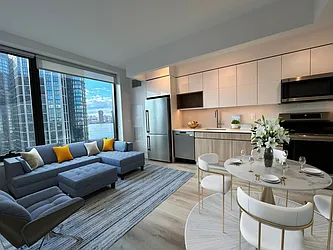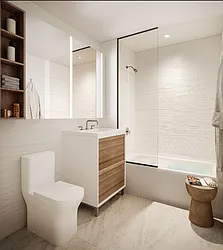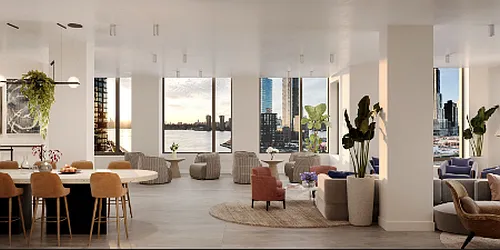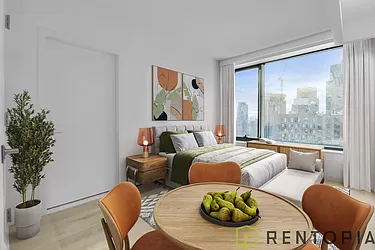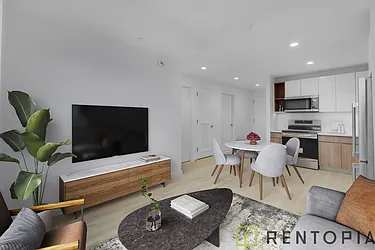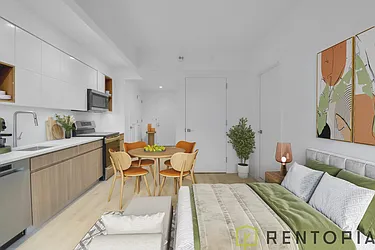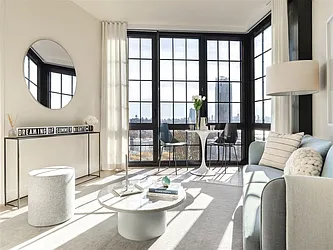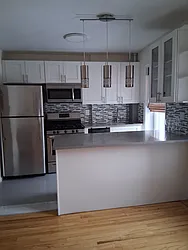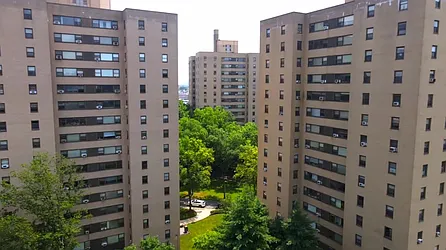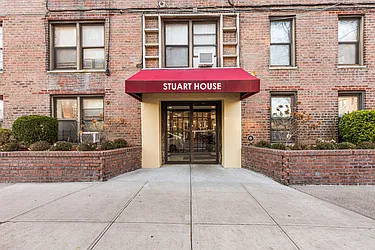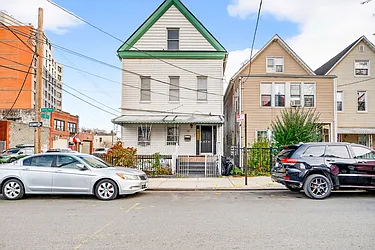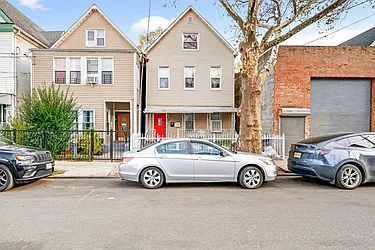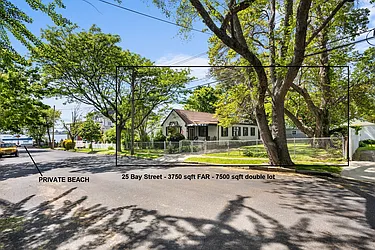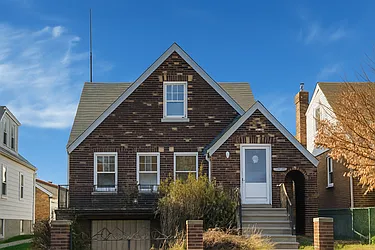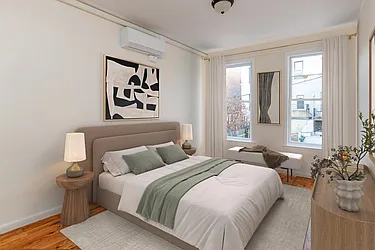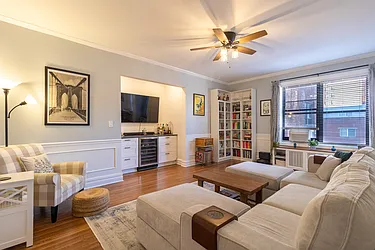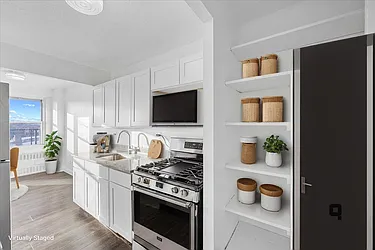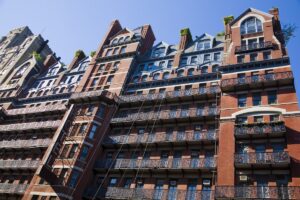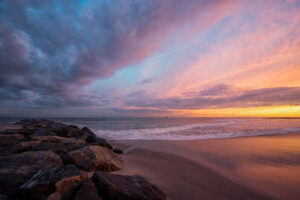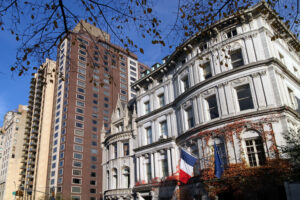New York City certainly has unique geography, with the five boroughs scattered across four different landmasses. As a result, there are a whole lot of NYC bridges: 2,027, to be exact. Ten of those NYC bridges have landmark status, meaning they play a significant role in the city’s heritage. All NYC bridges are hallmarks of their neighborhoods. For instance, Washington Heights is always in the shadow of the George Washington Bridge, and Dumbo has countless photo ops under the Manhattan Bridge. The following shares information about some of the city’s busiest bridges.
Manhattan Rentals Under $3000 on StreetEasy Article continues below
The 11 NYC Bridges You Need To Know
The following list is in no particular order. Each one is vital to New York City, just like the other 2,000+ NYC bridges not on this list.
The Verrazzano-Narrows Bridge
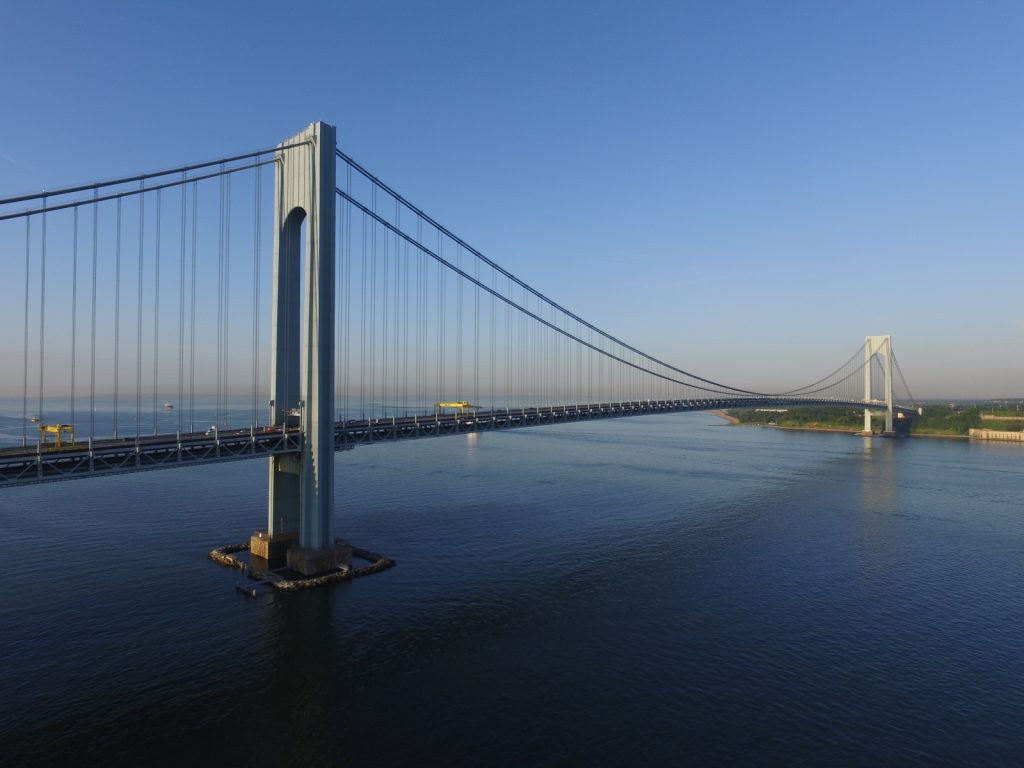
A glorious, double-decked behemoth of a suspension bridge, The Verrazzano-Narrows connects Staten Island and Brooklyn.
More commonly known as just the Verrazzano, the bridge looms over Fort Hamilton in Brooklyn, a southwestern neighborhood known primarily for its military base with the same name. Many New Yorkers take the Verrazzano to travel to Jersey and the rest of the East Coast.
While New Yorkers have been lobbying for a bike or pedestrian lane on the bridge, it looks like it’ll be a while before that ever happens. The bridge remains car only and requires a toll.
The Brooklyn Bridge
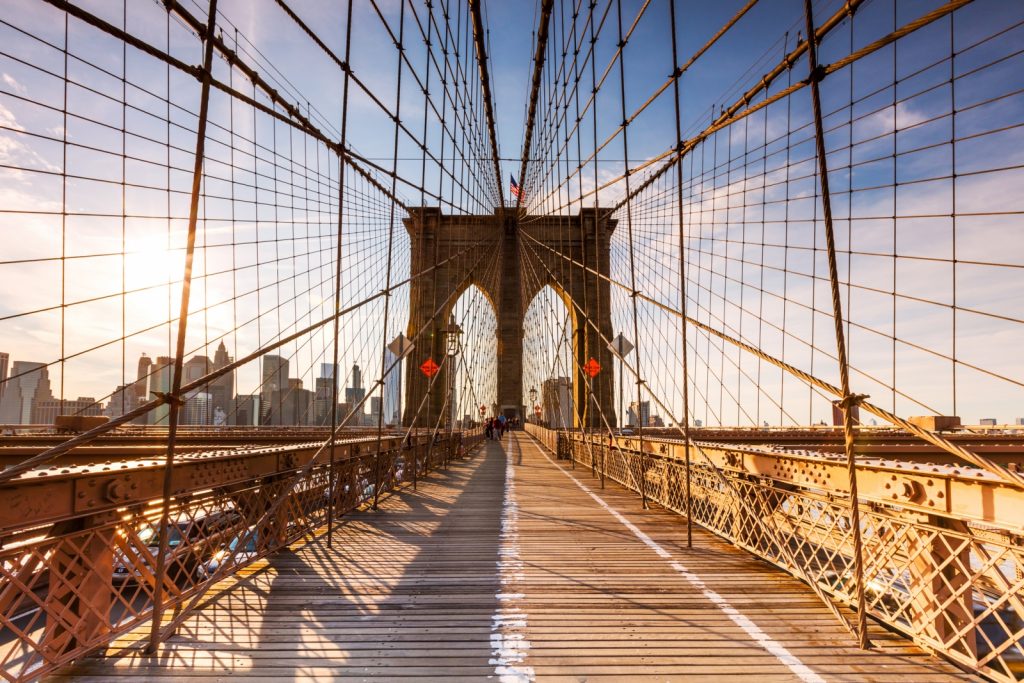
This Neo-Gothic beauty is one of the oldest roadway bridges in the United States and is easily the queen of all NYC bridges. A hybrid cable-stayed and suspension bridge, the Brooklyn Bridge connects the Financial District in Manhattan and northeastern Brooklyn, spanning the East River. It was the first steel-wire suspension bridge ever constructed and now hosts daily roughly 105,679 cars per day. FYI, bikes are also permitted.
Brooklyn Rentals Under $3000 on StreetEasy Article continues below
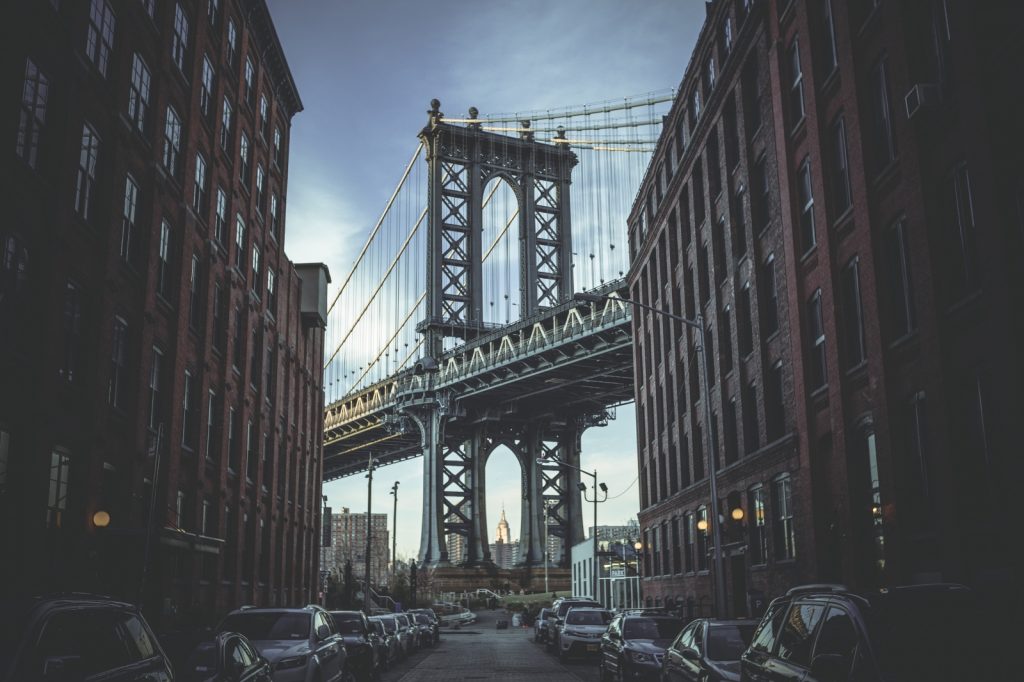
The Manhattan Bridge
Running almost parallel to the Brooklyn Bridge, this suspension bridge spans the East River, connecting Lower Manhattan with Downtown Brooklyn.
Debbie Zolan, a real estate broker with Compass, has lived in Dumbo since 2006. In 2011, she bought the unit she was renting at 131 Water Street, which features units at eye-level with the bridge and below it. While some might complain about the noise, Zolan says kids in the building love watching the cars on the bridge go by. And the building’s triple-paned windows don’t hurt, either.
There’s even a neighborhood named after the bridge: Dumbo stands for Down Under the Manhattan Bridge Overpass. This quaint neighborhood filled with cobblestone streets and small businesses has exploded in popularity in the last two decades.
“We always joke around that when you’re in Dumbo, you have to embrace the bridge,” Zolan said. “Walking around and being in the parks and playgrounds with your kids, and you get a call on your cell phone, you have to know what street you can dash down so you can hear.”
The bridge also provides a fantastic photo opportunity at the Archway, a plaza, which is also home to many events.
Can You Walk Across the Manhattan Bridge?
The Brooklyn Bridge pedestrian walkway might get the most hype out of all NYC bridges, but you can also walk or bike over the Manhattan Bridge!
The pedestrian walkway is on the south side of the bridge, with entrances at Jay Street and Sand Street in Brooklyn and Bowery and Canal Street in Manhattan.
With the south side reserved for pedestrians, the north side of the bridge is open to bikes. You can enter the bike lane at Jay Street and Sand Street in Brooklyn or Chrystie Street in Manhattan. Or, if you prefer the subway, the B, D, N, and Q trains run on top of the bridge.
The Queensboro Bridge
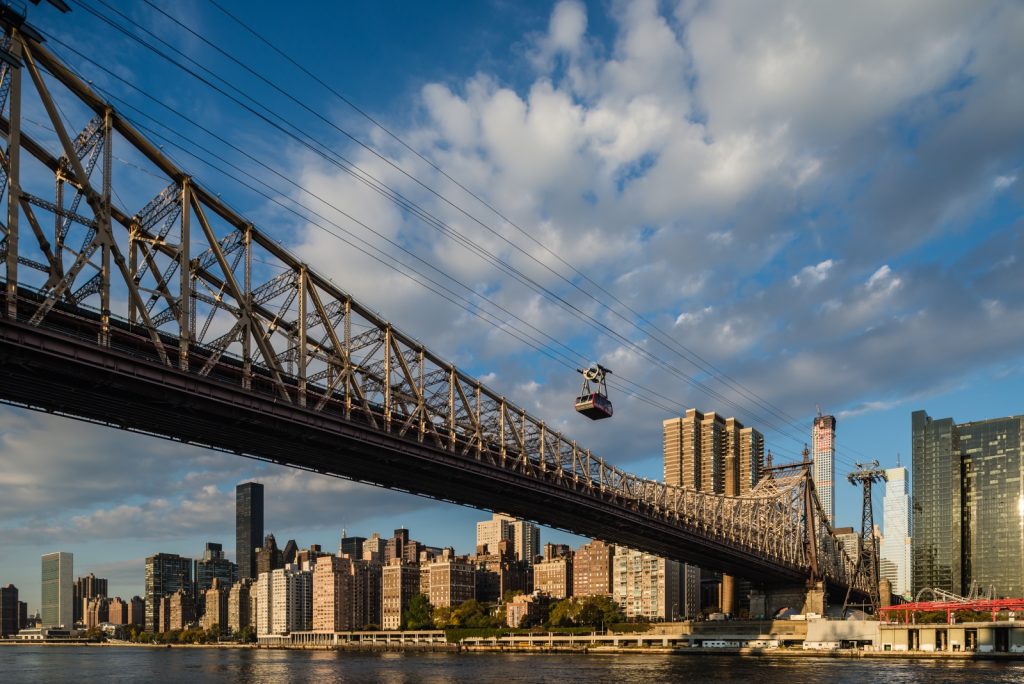
This bridge is also known as the 59th Street Bridge and, since March 2011, the Ed Koch Queensboro Bridge.
This double-decked cantilever beauty spans the East River, connecting Long Island City with Midtown East and passing over Roosevelt Island. Note that you cannot reach this small, skinny island via the Queensboro Bridge. You’ll need to take the Roosevelt Island Bridge, which connects Astoria, Queens, to the island. Or, you can take the F train.
Are Pedestrians and Bikers Permitted on the Queensboro Bridge?
Yes, both pedestrians and bikers are permitted on the Queensboro Bridge. Both paths are nearer to traffic than NYC bridges like the Williamsburg Bridge, however. The entrances to the walkway are on East 60th Street between First and Second Avenues in Manhattan, and Crescent Street and Queens Plaza North in Queens.
Rentals Under $3,000 in Roosevelt Island on StreetEasy Article continues below
The George Washington Bridge
From cliff to cliff, this impressive double-decked suspension bridge spans the Hudson River, connecting Washington Heights, a very affordable neighborhood for renters and buyers, and Fort Lee, New Jersey. The GWB carries over 103 million vehicles per year, making it the world’s busiest motor vehicle bridge. It’s also the largest bridge in New York.
Matthew Bizzarro of the Bizzarro Agency has lived in Washington Heights since 2001 and has always enjoyed the bridge, especially at night, when it’s often lit up.
“Sometimes they light it up in colors; it’s just gorgeous,” he said. “So it’s a vibrant backdrop of the neighborhood.”
Right under the bridge lies Fort Washington Park, home to the Little Red Lighthouse, another neighborhood icon. Bizzarro sees the GWB as a great amenity to Upper Manhattan because it allows people with cars to quickly get out of the city if they like to travel.
“I have clients right now that are moving from Brooklyn, and they go upstate all the time,” he said. “I saved them a two-hour drive when they moved here because it takes them two hours just to get to Upper Manhattan from Brooklyn in traffic.”
Can You Walk or Bike Across the George Washington Bridge?
Yes! The same pathway is open to both pedestrians and bicycles. Note that the path is very narrow! The two entrances in Manhattan can be found at 177th and Cabrini Boulevard and 179th and Cabrini.
Washington Heights Homes Under $700,000 on StreetEasy Article continues below
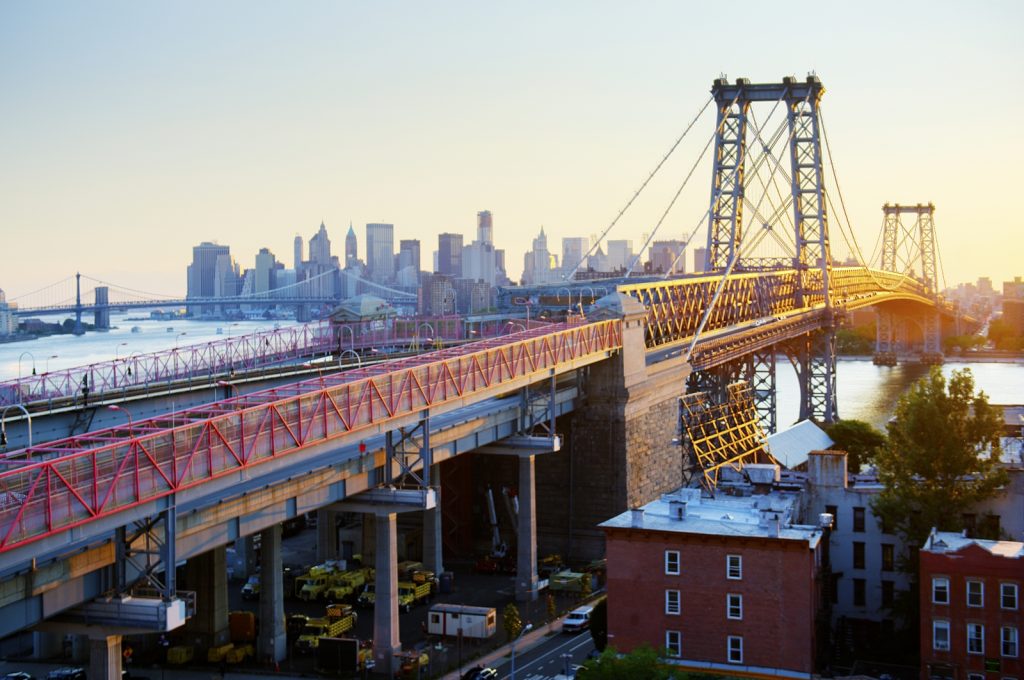
The Williamsburg Bridge
Connecting the Lower East Side with Williamsburg, Brooklyn, the Williamsburg Bridge shuttles 140,000 motorists over its span daily. It runs parallel to, but further north than, the Manhattan and Brooklyn Bridges.
David Soltero of Brick + Mortar has lived in Williamsburg since 2008, enjoys taking the Williamsburg Bridge into Manhattan, enjoying the skyline along the way. As a native of Los Angeles, the bridge served as his new personal landmark.
“When I moved here, the Williamsburg Bridge to me was amazing just because it was my new hometown bridge,” Soltero said. “It’s my bridge.”
While the bridge can be noisy, Soltero said the vast majority of homes in Williamsburg are too far away to hear anything. While selling properties in a building on Broadway, he had some people coming specifically to be near the bridge, while others had their concerns.
“Some people, the one thing they would do, they would walk into the apartment, and I’d say, ‘Great views, right?’ And they’d go, ‘Shh, be quiet. I want to hear if I can hear the trains.'” Spoiler: they could not.
Are Pedestrians and Bikes Allowed on the Williamsburg Bridge?
Yes. The Williamsburg Bridge has a pedestrian walkway at Berry Street between South 5th and South 6th Streets in Brooklyn and Clinton Street and Delancey Streets in Manhattan. The bike path begins at the same place in Manhattan and Washington Plaza in Brooklyn.
Additionally, the J, M, and Z trains run over the Williamsburg Bridge.
Williamsburg Rentals Under $3,500 On StreetEasy Article continues below
The Robert F. Kennedy AKA Triborough Bridge
This bridge is more of a giant conglomerate than just a bridge. It includes three different bridges, viaducts, 14 miles of highway, parks, and administrative offices. The bridges connect Manhattan, Queens, and the Bronx, making it the sole New York bridge to connect three boroughs. Hence, the name.
There is a pedestrian walkway, which is not open to bikes. Unfortunately, there are stairs, meaning it is not wheelchair-accessible. Pedestrians can take the bridge’s Queens’ leg, starting in Astoria at Hoyt Avenue between 26th and 27th streets, to get to the Randall’s Island walkway. Another walkway connects Randall’s Island to Manhattan.
Astoria Rentals Under 3,000 on StreetEasy Article continues below
The Kosciuszko Bridge
The Kosciusko Bridge connects Greenpoint, Brooklyn, an excellent neighborhood for renters, to Maspeth, Queens. It may also be the most challenging NYC bridge to pronounce. Depending on who you ask, it’s pronounced kah-skee-OOS-koh, kos-skee-OSS-koh, or kuh-SHOO-skoh. The first bridge built on this site was erected in 1803 and was initially called the Penny Bridge — it charged one cent per passenger. Then it was destroyed, rebuilt, and destroyed again.
Most recently, the city constructed a replacement in 2014, with the second crossing opening in 2019. The construction added a walkway and bike path, which hadn’t been present on the bridge since the ’60s.
Does the Kosciuzsko Bridge have a pedestrian walkway?
Yes, thanks to the newest upgrades. The entrances to the walkway are on Laurel Hill Boulevard and 54th Road in Queens, and Meeker Avenue and Van Dam Street in Brooklyn. The pathway is 20-feet wide and open to both pedestrians and bikes.
Greenpoint Rentals Under $3,500 on StreetEasy Article continues below
The Henry Hudson Bridge
Connecting the Bronx and Inwood (one of the most affordable areas in Manhattan), the Henry Hudson Bridge, a steel arch toll bridge that spans the Spuyten Duyvil Creek, connects the Bronx and Inwood. It was briefly painted green to help it blend in with the natural beauty of Inwood Hill Park.
While it’s now back to a standard bridge color, it’s still visible from the many walking trails in Inwood and offers a pedestrian pathway to Spuyten Duyvil. On the other side is Henry Hudson Park in the Bronx, making it a great day trip to the outdoors. Bikes are also permitted on this NYC bridge.
The Bronx-Whitestone Bridge
This suspension bridge spans the East River, connecting Queens with the Bronx via I-678. Robert Moses saw the Bronx-Whitestone Bridge as a crucial link to a new airport that would eventually be named LaGuardia Airport. The hope, too, was that it would relieve the congestion that was clogging the Triborough. Yes — building NYC bridges to reduce traffic on other NYC bridges has been a theme throughout the city’s history.
Commonly called the Whitestone now, it is, in fact, often the route that travelers choose to get to LaGuardia, the only major airport on the East Coast not accessible via rail. However, that’s planned to change soon, with a link to the 7 train underway.
While the bridge used to have a pedestrian walkway, it’s now only open to cars.
Bronx Homes Under $1M on StreetEasy Article continues below
The Throgs Neck Bridge
Spanning the East River in parallel with the Bronx-Whitestone Bridge and also connecting the Bronx to Queens and Long Island, the Throgs Neck Bridge, compared to other NYC bridges, was built primarily to relieve traffic. The idea was that travelers would have the choice between the Throgs Neck and the Whitestone. But in practice, traffic only increased.
Still, it has remained a popular option for travelers getting off the GWB and heading to Long Island. The bridge is only accessible to cars.
